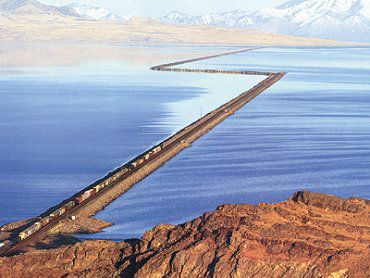Most people don’t give much thought to what’s being shipped on the railroads in Emery County. But, Dana Pompetti from the Union Pacific railroad is responsible for railroad safety in not just Emery County but a big part of the west.
Pompetti addressed the Emery County Local Emergency Planning Committee on hazardous waste being shipped in tank cars.
Tank cars are enclosed. More than 85 percent of the hazardous materials shipped annually are shipped by rail.
Pompetti pointed out rail is much safer for the transportation of hazardous materials than truck.
The tanks are labeled so what’s being shipped is easily identifiable.
Problems with hazardous materials being shipped by rail are very small. But, when a problem does occur the responder needs to have detailed information about what is in the tank.
The majority of the tank cars don’t belong to the railroad but to the individual companies that are doing the shipping.
Tanks are sectioned into three types. Non or low pressure tank cars, general service tank cars, acid service; pressure tank cars and cryogenic tank cars.
A typical pressure tank car will transport hazardous materials including flammable, non-flammable and poison gases. These cars are typically top loading. Pressure tank cars may be insulated and/or thermally protected. Those without insulation and without jacketed thermal protection have at least the top two-thirds of the tank painted white.
You can tell if a tank is pressure or non-pressure by the fittings on top of the car. Most non-pressure tank cars have visible fittings or one or more expansion domes. Pressure tank cars typically have all fittings out of sight under a single protective housing on top of the tank.
Cryogenic liquid tank cars carry low pressure refrigerated liquids. Materials found in these tanks include nitrogen and oxygen.
Cryogenic liquid tank car tanks are of the tank within a tank syle. The combination of insulation and vacuum reduces heat transfer to the outside, allowing the cryogenic liquid to remain in a liquid state for only 30 days. The shipper tracks these shipments as they are time-sensitive.
Everything shipped on the railroad is accompanied by shipping papers. These papers detail exactly what is being shipped and where it originated as well as its destination. At the LEPC meeting it was determined supplies need to be kept in Green River for emergency purposes. In the case of a derailment or problem with the transporting of hazardous materials there needs to be clean-up materials readily available.
Precautions for hazardous materials shipped by rail

"The railroad causeway across the Great Salt Lake."
